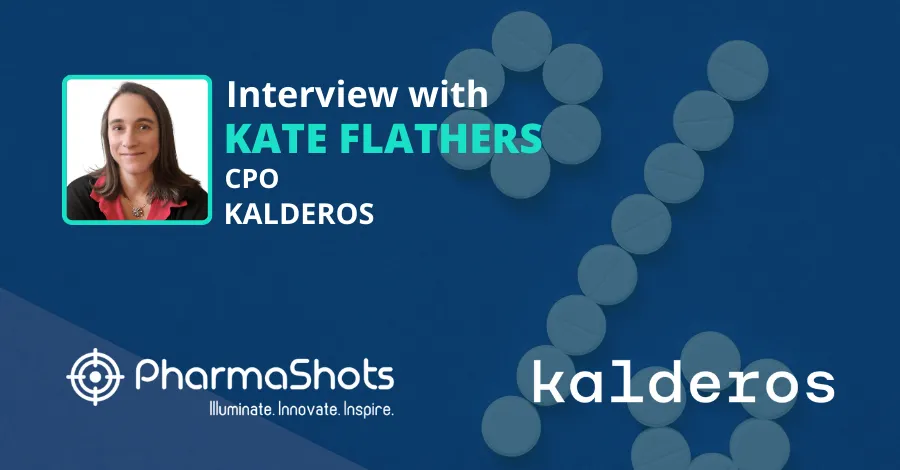
SEA Management: Donna Carstens from AstraZeneca in a Riveting Conversation with PharmaShots
Shots:
-
Recently AstraZeneca’s FASENRA (benralizumab) received approval from the US FDA as an add-on maintenance treatment for patients (≥ 6 yrs.) with severe asthma and with an eosinophilic phenotype
-
Today, at PharmaShots we have with us Donna Carstens, Senior Medical Director Respiratory, Fasenra at AstraZeneca
-
Donna shares insights from the TATE study an open-label, multinational, non-randomized, parallel assignment P-III trial, evaluating the safety of FASENRA in children aged 6 to 11 years with SEA
Saurabh: Could you please tell us more about FASENRA, its MOA, ROA, and recommended dose?
Donna: FASENRA is indicated for the add-on maintenance treatment of patients with severe asthma aged 6 years and older, and with an eosinophilic phenotype. FASENRA is not indicated for treatment of other eosinophilic conditions or for the relief of acute bronchospasm or status asthmaticus. FASENRA is for subcutaneous use only. The recommended dosing regimen for FASENRA across all patients aged 6 years and older is every 4 weeks for the first three doses, followed by every 8 weeks thereafter.
The recommended dose of FASENRA is:
-
10mg in patients aged 6 to 11 years who weigh less than 35kg.
-
30mg in patients aged 12 years and older and in patients aged 6 to 11 years who weigh 35kg or more.
Saurabh: Could you please shed some light on FASENRA as an “add-on treatment”? What are the treatment options with which it is added and among all which combination has shown better results?
Donna: FASENRA is defined as an “add-on maintenance treatment” for patients with severe eosinohilic asthma (SEA), which is a debilitating and potentially fatal condition, and there remains an unmet need for additional, safe and effective pediatric treatments. Asthma is the most common chronic childhood disease worldwide, and the prevalence of severe childhood asthma is almost 5% within those who have asthma. SEA in children is a complicated condition that can be challenging to treat. Children with severe asthma are at increased risk for adverse outcomes, including life-threatening exacerbations. When uncontrolled, children with severe asthma face a significant burden including impaired school performance, substantially higher healthcare resource use and a poorer quality of life. Unlike rescue inhalers that should only be used in an emergency situation, add-on maintenance treatment is used routinely, often once or twice daily — even when the patient isn't experiencing any symptoms. Recurrent exacerbations with associated OCS steroid use add to the exposure which can lead to serious short- and long-term adverse effects, highlighting the need for safe and effective add-on maintenance treatments for children with SEA.
Saurabh: Can you please tell us about results from the TATE study and how they support the effectiveness and safety of FASENRA?
Donna: The FDA approval of FASENRA as an add-on treatment in patients aged 6 to 11 with severe eosinophilic asthma (SEA) was supported by evidence from the TATE Phase III trial, a pediatric pharmacokinetics (PK)/pharmacodynamics (PD) and safety trial in SEA in addition to evidence from adequate and well-controlled studies in adults and adolescents. The TATE Phase III trial was an open-label, multinational, non-randomized, parallel assignment Phase III trial evaluating the safety of FASENRA in children aged 6 to 11 years with SEA. The trial evaluated the PK, PD and safety of FASENRA administered subcutaneously in 28 children in the US and Japan aged 6 to 11 years with SEA over 48 weeks. There were 2 additional children ages 12-14 years included in Japan. A pediatric PK/PD study can be designed to assess how the drug works in the body and how the body works on the drug (such as for absorption, distribution, metabolism and clearance for PK) across different ages and weights of subjects. FASENRA PK, PD and adverse event profiles in children with SEA were consistent with those seen in adults and adolescents in past trials. The results of the TATE study add to FASENRA’s growing body of evidence, further characterizing its well-established safety profile, and is a crucial step in offering children with SEA a wider choice of treatment in the future.
Saurabh: How does FASENRA differentiate itself from other available treatments for pediatric severe asthma?
Donna: Severe uncontrolled asthma is debilitating and potentially fatal and in children is a complicated condition that can be challenging to treat. FASENRA has made a difference for many adults and adolescents living with severe eosinophilic asthma (SEA). Evidence from adequate and well-controlled trials in adult and adolescent populations and the results from the TATE Phase III trial support the potential of FASENRA to now benefit younger patients with this condition. FASENRA remains the leading biologic for the treatment of SEA in key markets around the world, and to-date, more than 100,000 patients have been treated with FASENRA.
Saurabh: AstraZeneca is a leader in Respiratory care. Do you have any treatment options being assessed in the pipeline?
Donna: Building on AstraZeneca’s leadership in respiratory, FASENRA is the first-line, first-choice biologic for eosinophilic asthma driven diseases.
The results of the TATE study add to FASENRA’s growing body of evidence, further characterizing its well-established safety profile, and are a crucial step in offering children with severe eosinophilic asthma (SEA) a wider choice of treatment in the future. FASENRA continues on a strong trajectory in SEA and has achieved blockbuster status. It remains the leading biologic for the treatment of SEA in key markets around the world, and to-date, more than 100,000 patients have been treated with FASENRA. FASENRA is in development for other diseases including chronic obstructive pulmonary disease, chronic rhinosinusitis with nasal polyps and hypereosinophilic syndrome.
Saurabh: COPD is one of the top 3 leading causes of death. How does AstraZeneca plan to reduce deaths by COPD and revolutionize asthma care using digital therapeutics?
Donna: Not all patients have a primary care doctor — 30% of Americans don’t have a primary care provider — and some live in rural areas making it difficult to access quality care. Providing patients with telehealth options to speak directly with a physician, alongside digital tools that are accessible, easy to use and convenient for the patient, will help remove those barriers and make sure patients have access to doctors and guideline-directed medical therapies.
Chronic diseases, like COPD and asthma, can be biologically complex and have multiple drivers. Through our in-depth knowledge of these underlying disease drivers and utilization of screening tools, we are working to match patients with treatments and resources which are most likely to benefit them.
One resource that is particularly impactful is the Asthma Impairment and Risk Questionnaire, or AIRQ®. It is a free accessible online and printable assessment tool intended to help identify patients 12 years of age and older whose health may be at risk because of uncontrolled asthma, empowering the patients to better understand and thereby control their asthma.
We are also excited about our industry first telehealth solution in asthma designed to appeal to what asthma patients want — a convenient and accessible form of care that seamlessly integrates into their lives. With patient empowered virtual care solutions like this, asthma patients can connect with a primary care physician within a 24-hour window, eliminating delays in seeing a provider and some of the complexities in follow-up to access their prescriptions.
Image Source: Canva
About the Author:

Donna Carstens
Dr Donna Carstens, MD joined the AZ US Medical Respiratory team as Senior Medical Director, Fasenra Asthma, in April 2020. Dr. Carstens received her BA in Biology at Harvard University and completed her MD degree at McGill University in Montreal, Quebec. She completed her internal medicine training and fellowship in Pulmonary Medicine at Duke University and was a Clinical Assistant Professor of Medicine, Attending Physician, Pulmonary at the Thomas Jefferson University Health System in Philadelphia, PA for over 18 years. She served as attending physician supervising Pulmonology fellows and medical residents in the care of patients with complex pulmonary diseases in both inpatient and outpatient settings and was involved in many clinical trials as investigator/sub-investigator while in academic practice.
Prior to joining AstraZeneca Donna worked as Medical Director, Accountable Medical Lead, Nucala at Glaxo Smith Kline. Donna brings a breath of clinical and pharmaceutical business experience to her role.
Related Post: EGPA Remission with Fasenra: Michael Wechsler and Andrew Menzies Gow in Conversation with PharmaShots
Tags

Saurabh is a Senior Content Writer at PharmaShots. He is a voracious reader and follows the recent trends and innovations of life science companies diligently. His work at PharmaShots involves writing articles, editing content, and proofreading drafts. He has a knack for writing content that covers the Biotech, MedTech, Pharmaceutical, and Healthcare sectors.














